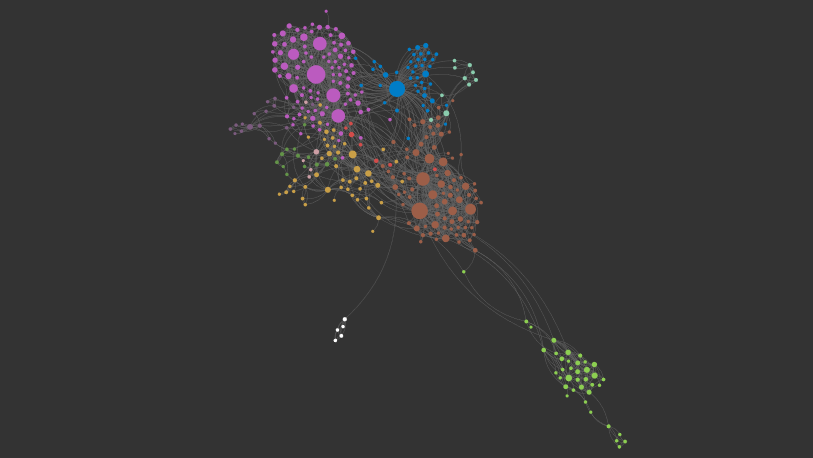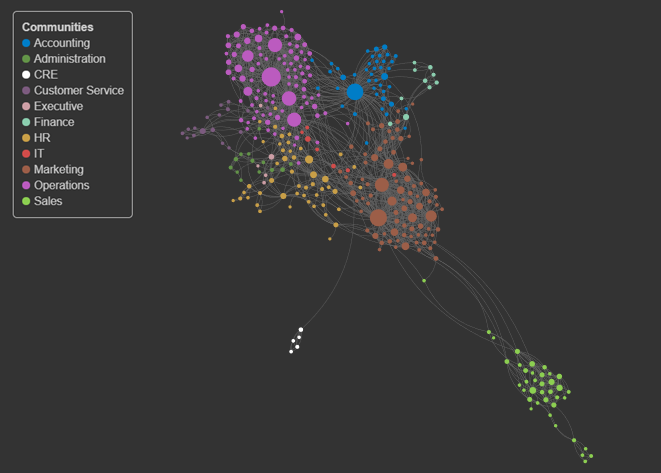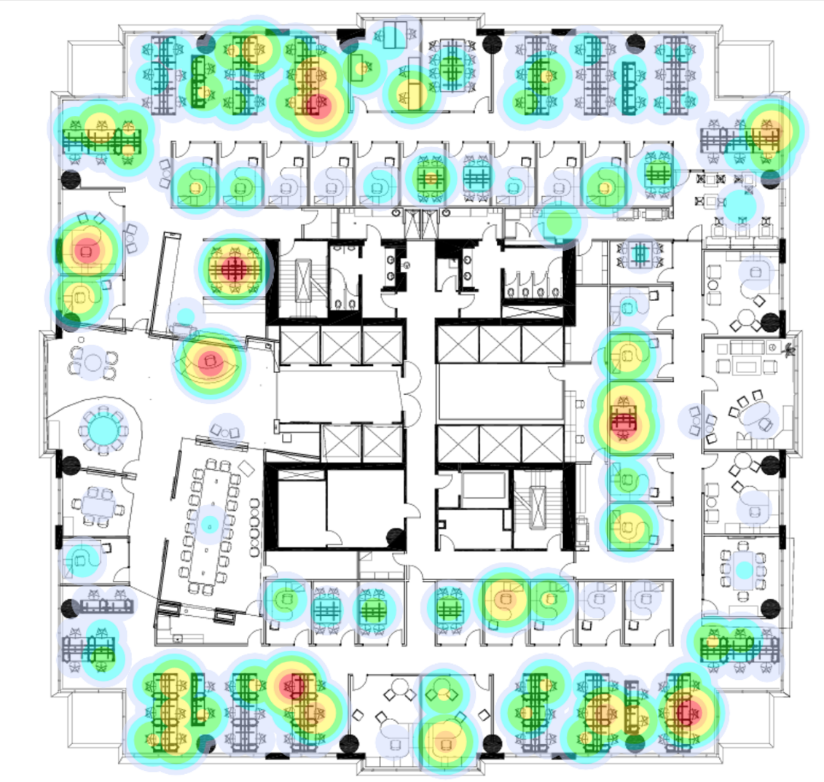What is the real value of the office when majority of knowledge workers can work remotely?

“There’s no question that the workplace will never quite be the same again,” said Jim Link, the Chief Human Resources Officer of Randstad North America. The pandemic has upended deep-rooted beliefs that the physical workplace is a vital component of an organization’s competitive advantage, and many CHROs and CFOs are reconsidering the role their office has in delivering value to employees and customers alike. The demand for a stronger, evidence-based approach is becoming more apparent, and workplace analytics has taken a more prominent role in delivering insights into what impact, if any, the office has on the bottom line.
Workplace analytics is a structured way to visualize how the built environment, communications, information, and people flow through an organization. Clear patterns often emerge that demonstrate how the office impacts productivity, workforce effectiveness, and employee engagement. In short, it helps leaders understand the real value their office contributes to the success of their organization.
What value does the office provide when majority of knowledge workers can work remotely? Amidst the pandemic, many organizations are feeling the financial pinch of stagnant economic growth, and are inevitably looking for ways to better manage or reduce costs associated with their real estate footprint. Some executives we have spoken with are planning to scale-back office perks and pause redesigns until the future is better understood. However, as our experience in workplace strategy has taught us, this may not be the best approach since not all perks and spaces are created equal or drive the types of employee behaviors that help organizations reach their goals.
With the help of workplace analytics, it is now possible to understand which aspects of the office contribute to goal achievement, collaboration and innovation, and which aspects are merely relics of the past. For example, “Is the break area or ubiquitous “water cooler” helping drive employee productivity, cross functional collaboration, knowledge sharing and social cohesion, or is it simply an area employees pass through to grab a quick refreshment?”
The following section will help your team uncover the real value of the office through the help of analytics, and how to build a roadmap to achieve success across individuals, teams, and the organization. We will focus on answering three questions:
- In the future, how will EMPLOYEES utilize the workplace?
- How does LEADERSHIP want employees to utilize the space?
- How will the new workplace affect COLLABORATION?
In the future, how will employees utilize the workplace?
Recently, SpaceLab, a UK-based workplace consultancy, released the results from their 2020 Future of Work study and the findings were clear, 46 percent of employees believe they are as productive, if not more productive, when working from home. This research is echoed from our own data gathered during the midst of the pandemic. When we asked, “How are you currently feeling as you adjust to working from home during crisis?” Over 70 percent of survey respondents said they still felt productive.
However, digging a little deeper, respondents were quick to add they missed dedicated quiet spaces, more effective or reliable tools and technology, personal connections, and time for team-focused activities. Our research supports these findings, but also highlights that employee needs often vary across industry, job function, and their daily activities.
In a recent client survey, respondents of a U.S. based 35,000-employee organization made it clear that autonomy, individual choice and personal safety were important factors for leaders to consider when designing a plan to reopen. One of our firms, is currently testing this model by allowing employees the opportunity to return to work based on their personal preference and comfort level with a max of 50 percent occupancy. In general, this method prioritizes keeping employees safe and healthy while reframing the office as a resource center, hub for collaboration, and location for team building, that is vital to this organization’s success.
Company executives and CRE practitioners will benefit from conducting employee workplace surveys and interviews to outline precisely what each team needs and how to allocate their limited resources and space. This survey data can then be merged with other workplace data sources to validate the results and create customized plans for teams across the organization. We will discuss this more in the next section.
How does leadership want employees to utilize the workplace?
Prior to the pandemic, most organizations were struggling to find the right balance of different space types in the workplace. Some workstations and conference rooms would be utilized 90 percent of the time while others would remain dormant for weeks or months as teams traveled, worked remote, or rotated on projects. On average, we have found client workspaces were utilized 30-40 percent of the time.
As organizations prepare to return to the office in some capacity, it is key to start collecting space utilization and occupancy data to see how many people are utilizing the office and where they are going, leading us to understand how in-office behaviors have changed from pre-pandemic to now. Continually collecting this information will be key as organizations determine next steps for their space to ensure resources are being utilized where they matter.
Within our own firm, we found their space utilization was around 55 percent prior to the pandemic. Currently, with their mix of open and scheduled in-office days, their space utilization is about 35 percent. As we continue to monitor the utilization and occupancy, along with data from surveys, feedback loops, and focus groups, we will be able to determine what spaces, tools, and technology need to be adapted to best support their teams.
Some of the easiest sources of in-office behavior data to collect are also the most accurate – data generated from digital exhaust (i.e., data created as a by-product of an employee’s interaction with technology). Sources of digital exhaust include conference room reservation software, RFID/ badge-reader systems, workstation and room occupancy sensors, Wi-Fi routers, and even badge-accessible coffee machines and printers.
Each of these data sources can be linked to department and team-level activity and will highlight different aspects of the employee workplace experience. Leadership can then work with the appropriate partners to merge the data with workplace survey results to develop strategic action plans for teams across a real estate portfolio.
How will the new workplace affect collaboration?
An often overlooked but significant source of value to the office are the numerous relationship networks that employees foster to acquire knowledge, collaborate, and create value at work. Also called an organization’s social capital, these networks are central to how work gets done, businesses grow, and people succeed.
These relational networks generally lie outside the formal business hierarchy and are often unknown to leadership. They can be heavily influenced by many aspects including office location, job requirements, role tenure, team composition, employee personality, leadership priorities, and even seating proximity. We expect these networks to continue evolving as when and where we work becomes more flexible and driven by employee and team needs. One potential side-effect of this flexibility may be that networks will unknowingly experience breakdowns in how information flows through the organization.
Recently, workplace analytic tools like Polinode and Swoop Analytics have been developed to help make these relational networks more visible and easier to work with. Leaders can use the information from these tools to accelerate the connections and resources employees and teams need to be successful. Information from communication and collaboration tools like email, IM, Teams, Yammer, Workplace, and Slack, to name a few, provide leaders the opportunity to observe digital interactions across systems, optimize organizational culture, and reduce constrained human potential.

For example, one organization wanted to know how their teams were currently communicating, and who important influencers were in the organization. The theory was that some teams were not well connected, and if they could identify top influencers, leadership could then recruit those individuals to act as change ambassadors and/or communication liaisons. IT was able to pull the transactional level email data (time, date, sender name, receiver name) from Outlook 365, and together we mapped 30,000 communications across a two-month window.
The chart below shows these interactions by department-level and individual. We can see some departments are strongly connected through multiple individuals, and others are tied together by only a few. Key influencers were also easily identified based on the size of their circle, the larger the circle = the more broadly and frequently these individuals communicated across teams. Leadership was then able create a plan for more purposeful connections between groups and align their strongest communicators with change plans and important communications. The findings, combined with employee survey results and workplace utilization data, provided further insight into colocation options and painted a more complete picture of how their workplace strategy could be optimized moving forward.
So what does it all mean now?
We know the pandemic has dramatically altered how and where employees are interacting and collaborating. We have seen the square footage per employee more than double as organizations allow roughly 30 percent of their workforce back into the office, while work remote programs have increased and are here to stay. We are now asking, is that the best use of our space? Right now, most likely not, but in the future, it depends. As we continue to collect information on the value of the office, leveraging analytics, it will be key to augment our instinct about how to improve the workplace and employee experience, wherever teams may be.
Workplace analytics provides leaders with data that goes beyond square footage per person, tying in a human-centric approach, with data that is often hidden from view and rarely considered. We know from our research that decisions are more evidence based, by validating qualitative information against quantitative information to develop strategies that are tied to an organization’s goals, while reflecting the appropriate work styles and interactions to build connections, allocate resources, and impact the bottom line where it matters.



Key missing analytic? The authors speak of relational networks but never discuss the realities of physical network infrastructure. Furthermore there is never a suggestion that labor clusters could localize more jobs in secure local centers that are securely networked together. If we are going to construct more resilient work spaces we need to drop the binary thinking of home vs office. Distributed Design Group of Austin is found R&D in this field and looking for sponsors.